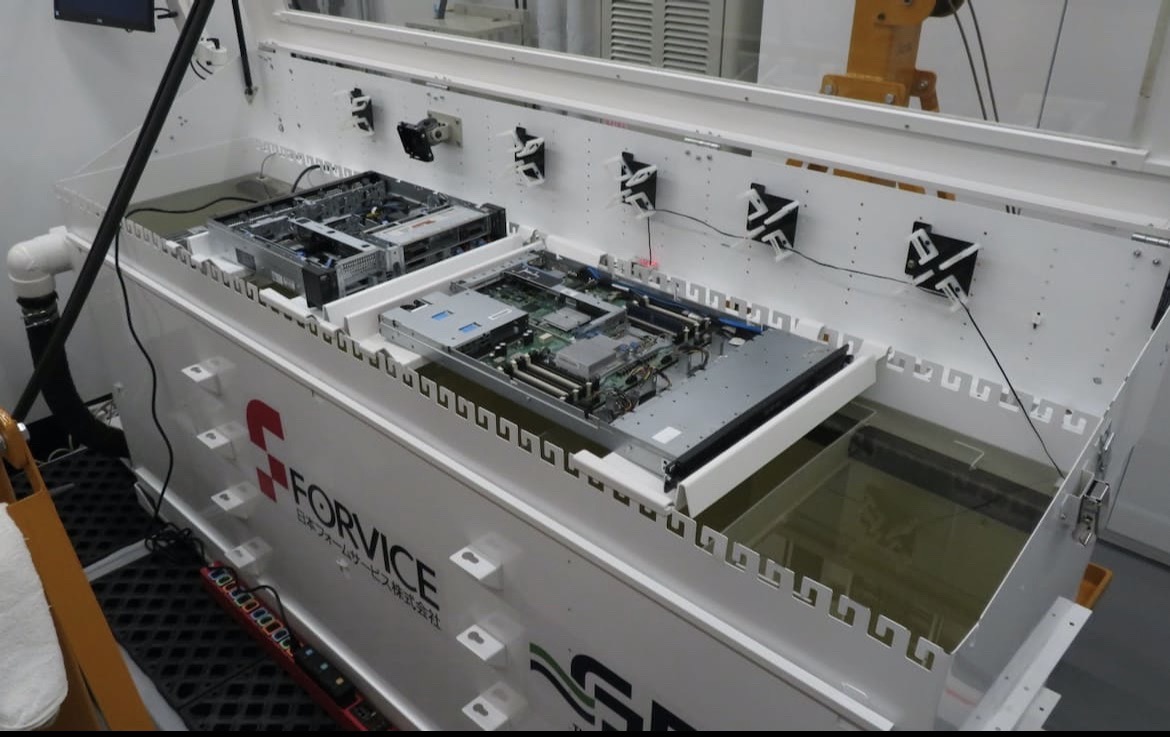NTT Communications conducts research at the co-creation base "Nexcenter Lab"
The cooling system of the data center becomes the Achilles point of the cloud service. This happened in England in July. The temperature rise caused by the record heat wave caused the air conditioning equipment in the data center to malfunction, and the cloud services of Google and Oracle were temporarily unavailable.

How to deal with the enormous heat generated by a large number of servers is the key to stable data center and cloud operations. In addition, "data center decarbonization," which reduces greenhouse gas emissions associated with data center operation, is also a focus of interest around the world. Developing data centers that incorporate more efficient cooling technology is an urgent issue.
Server compatible with liquid immersion method with some modifications
Against this backdrop, on July 28, NTT Communications released a next-generation server cooling technology for use in data centers at its co-creation base "Nexcenter Lab" near Tokyo. One of the highlights is the "liquid immersion" cooling system, in which the entire server is submerged in a container filled with coolant to cool down the processor and other components.
When I looked into the container, there was a server running quietly in a slightly yellowish transparent liquid. "Coolant is harmless to the touch. It feels like low viscosity car engine oil." Osamu Matsubayashi, Platform Service Headquarters Cloud & Network Service Department Manager/Data Center Product Owner explains as follows.
Cooling system developed by NTT Communications that dissipates heat by circulating cooling water through the rear door of the server rack (Photo: Nikkei Crosstech)
Behind many companies working on next-generation cooling technology, there is a growing need for technologies that require enormous computational processing, such as artificial intelligence (AI) and autonomous driving. The high-performance GPU (image processing semiconductor) servers and HPC (high-performance computing) servers that support these technologies consume a large amount of power and generate heat.
It is estimated that by 2030, both the power consumption and heat generation of IT equipment will increase by about 36 times compared to 2016. The development and commercialization of next-generation server cooling technology is likely to heat up.






